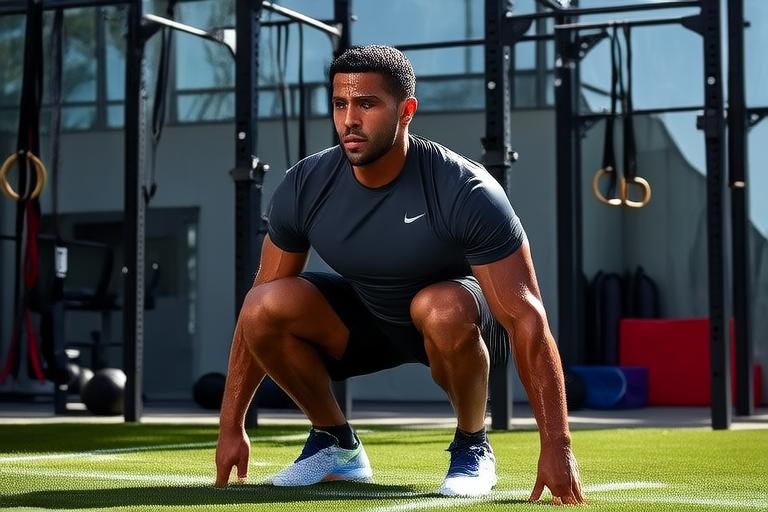Optimizing Performance: Sports Science and Safety Precautions
Introduction to Sports Science
Sports science plays an indispensable role in enhancing athletic performance by integrating various disciplines such as physiology, biomechanics, psychology, and nutrition. It aims at understanding the factors that influence physical activity and athletic performance, thereby providing evidence-based strategies to improve efficiency, endurance, and overall fitness. Coaches, athletes, and sports enthusiasts can benefit from these insights, which help in developing personalized training programs tailored to individual needs.
The field encompasses a wide range of studies including but not limited to the effects of exercise on the body, the psychological aspects of competition, and the nutritional requirements necessary for peak performance. By applying scientific principles, sports scientists work towards optimizing every aspect of an athlete’s regimen, ensuring they perform at their best while minimizing risks associated with injury or overtraining.
Key Principles of Sports Science
Training Methods
Effective training methods are crucial in maximizing athletic potential. Periodization, for instance, involves structuring training phases based on specific goals, alternating between periods of high intensity and lower intensity workouts. This approach allows athletes to build strength, power, and endurance systematically without succumbing to burnout or injury.
Circuit training is another popular method that combines strength and cardio exercises in a single session, promoting cardiovascular health and muscular endurance. Interval training, characterized by short bursts of intense effort followed by recovery periods, enhances speed and agility. Each of these methodologies contributes uniquely to improving performance, depending on the sport and the individual’s objectives.
Nutrition
A balanced diet rich in carbohydrates, proteins, fats, vitamins, and minerals is essential for sustained energy levels and efficient recovery. Carbohydrates serve as the primary fuel source during prolonged activities, whereas proteins aid in muscle repair and growth. Healthy fats provide additional energy and support hormone production. Hydration is equally important; it helps maintain blood volume, regulate body temperature, and transport nutrients.
Dietary supplements may be considered under certain circumstances, particularly when dietary intake falls short of meeting nutritional demands. However, supplementation should always be guided by professional advice to avoid potential side effects or interactions with medications.
Recovery Techniques
Proper recovery ensures that athletes can train consistently at high intensities without compromising their health. Active recovery, involving light exercise like walking or swimming, facilitates blood flow, reducing muscle stiffness and soreness. Passive recovery methods include stretching, foam rolling, and massage therapy, all aimed at relaxing muscles and improving flexibility.
Sleep is often overlooked yet critical for recovery. During sleep, the body repairs tissues damaged during exercise, consolidates memory, and balances hormones. Athletes should aim for 7-9 hours per night to support optimal functioning.
Mental Preparation
Mental toughness and focus are vital components of successful athletic endeavors. Visualization techniques involve imagining oneself performing successfully, boosting confidence and preparing the mind for challenges ahead. Mindfulness practices, such as meditation and deep breathing exercises, help manage stress and enhance concentration.
Goal setting provides direction and motivation, encouraging athletes to strive toward personal bests. By breaking down larger goals into smaller, achievable milestones, individuals remain motivated throughout their journey.
Safety Precautions in Sports
Common Injuries
Injuries are inevitable in any physical activity, ranging from minor sprains and strains to more severe conditions like fractures and concussions. Overuse injuries occur gradually due to repetitive motions, affecting tendons, ligaments, and bones. Acute injuries result from sudden trauma, often caused by collisions or falls.
Understanding the mechanisms behind different types of injuries enables coaches and athletes to implement appropriate prevention strategies. For example, wearing protective gear reduces the risk of head injuries in contact sports, while strengthening weak areas through targeted exercises minimizes the likelihood of overuse injuries.
Preventive Measures
Warm-up routines prepare the body for physical exertion, increasing heart rate, raising core temperature, and lubricating joints. Cool-down sessions facilitate gradual return to resting state, promoting relaxation and preventing post-exercise soreness.
Regular medical check-ups allow early detection of potential issues before they escalate into serious problems. Proper hydration maintains electrolyte balance, preventing cramps and fatigue. Adequate rest days ensure full recovery, avoiding overtraining syndrome.
Proper Equipment Use
Using appropriate footwear and apparel enhances comfort and performance while reducing injury risk. Shoes designed specifically for running offer better shock absorption compared to casual sneakers, protecting feet and joints from impact forces.
Helmets, pads, and other protective gear shield vulnerable parts of the body during risky activities. Ensuring that equipment fits correctly and remains in good condition is paramount for maximum protection.
Importance of Warm-ups and Cool-downs
Warm-ups increase blood circulation to muscles, making them more pliable and less prone to tearing. They also elevate core temperature, preparing the cardiovascular system for increased demands.
Cool-downs assist in lowering heart rate and respiration rate, facilitating removal of metabolic waste products. Stretching after exercise improves flexibility and reduces muscle stiffness, contributing to faster recovery.
Conclusion
The integration of sports science practices with safety precautions forms the cornerstone of optimal athlete performance. By leveraging scientific knowledge, athletes can achieve their full potential while minimizing the risks inherent in competitive sports. Training methods, nutrition plans, recovery strategies, and mental preparation all play pivotal roles in this endeavor.
Emphasizing safety measures further reinforces the foundation upon which athletic success is built. Preventive care, correct use of equipment, and adherence to warm-up and cool-down protocols contribute significantly to injury prevention and long-term health.
In summary, adopting a holistic approach that combines rigorous training with meticulous attention to safety ensures that athletes not only excel in their chosen disciplines but also enjoy fulfilling careers marked by longevity and well-being.










